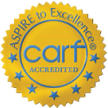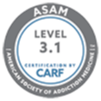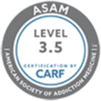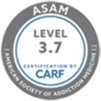While timelines aren’t always cut and dry, substance use disorder (SUD) and addiction treatment and prevention have evolved in both devastating and hopeful ways this past decade. In the past ten years, there have been two overarching trends: drug-related deaths and overdoses have risen in the United States, and so have the efforts to intervene in addiction, especially among youth and via media campaigns.
For many, it comes as no surprise that much of the increase in drug abuse and drug-related death stems from opioid use. Thankfully, the opioid crisis peaked in 2017 and has continued to improve but remains a critical concern. Additionally, although alcohol consumption is a normalized and often celebrated element of American culture, alcohol is still one of the leading causes of addiction across generations (especially in the case of Boomers, born between 1946 and 1964).
For Generation X, born between 1965 and 1980, marijuana and benzodiazepines (benzos) appeared to be the most commonly abused drugs in 2021 and 2022. However, Xers aren’t displaying huge upticks in drug abuse; in fact, SUD rates are generally low for them.
Millennials, folks who were born between 1981 and 1996, struggle with alcoholism and alcohol abuse. Opioids are also particularly lethal for this generation. Thankfully, they also happen to be the most commonly treated generation today. More millennials seek residential treatment in the United States for SUD than other groups.
If you or your loved one was born between 1997 and 2012, that makes you a member of Gen Z. Gen Zers overall are the least likely to develop or seek treatment for SUD. Their rates of alcohol abuse appear lower than any other generation, and their misuse of other substances generally is low as well. Still, the struggle with cocaine and benzos is very real for them and appears to be increasing. Gen Zers also don’t appear to be entering residential treatment programs as much as their older counterparts.
What Advances in SUD Prevention Are We Seeing?
In Iowa, just like in other states, anti-drug campaigns have a huge reach. The Partnership for a Drug-Free America and the Office of National Drug Control Policy’s (ONDCP) National Youth Anti-Drug Media Campaigns are two prime examples.
Each campaign uses television, radio, social media, printed materials, and the internet to teach families about healthy, drug-free lifestyles. The ONDCP focuses more heavily on substance use prevention in teens, with a spotlight on top dangers for kids: marijuana and inhalants.
These types of campaigns are both primary and secondary types of SUD prevention that are now beginning to become widespread. In total there are three types of preventative categories:
- Primary prevention: strives to eliminate substance use entirely
- Secondary prevention: aims to identify and treat early-on any individuals who abuse or have become addicted to drugs
- Tertiary prevention: reduces drug-abuse-inflicted damage in the form of intensive outpatient programs (IOPs) or inpatient residencies.
Another monumental advance in SUD prevention comes in the form of community. With proper organization and funding, researchers are seeing that community-implemented interventions (speaking events, educational family days, workshops, etc.) for groups of at-risk populations work well in preventing and treating addiction. Here are other successful, data-backed preventative measures taken in the last decade:
- School-based interventions (interactive, stress management workshops and techniques)
- Family-based interventions (often this falls on parents, who must educate themselves with coursework and events about drug-use risk factor identification, solid and supportive parenting skills, and conflict management and crisis de-escalation skills).
- Innovations in cognitive behavioral therapy (CBT) and equine therapy programs.
Why Is Drug Abuse Still So Rampant Despite Reduction Efforts?
We can see that Gen Z may have a better handle on drug abuse given all of the efforts to educate young people on the harms of substances in the past ten years. However, it still stands that the most effective prevention takes place in childhood and adolescence. Unfortunately, too many kids grow up without any preventive measures. This allows addiction to better thrive in adulthood.
Additionally, there’s still a lot of stigma around addiction and seeking help for it—a stigma that St. Gregory Recovery Center actively works to combat.
More subtly, racial, ethnic, linguistic, and economic barriers bar people from learning healthier coping mechanisms and when later attempting to secure treatment for SUD. At our Bayard and Des Moines facilities, we work with you to tear those walls down. Contact us today with questions and to learn more about the evolving SUD crisis and what we can do to stop it.











